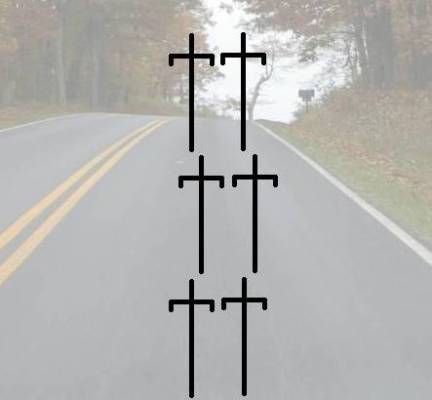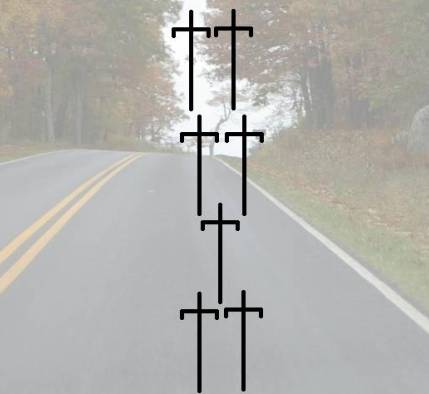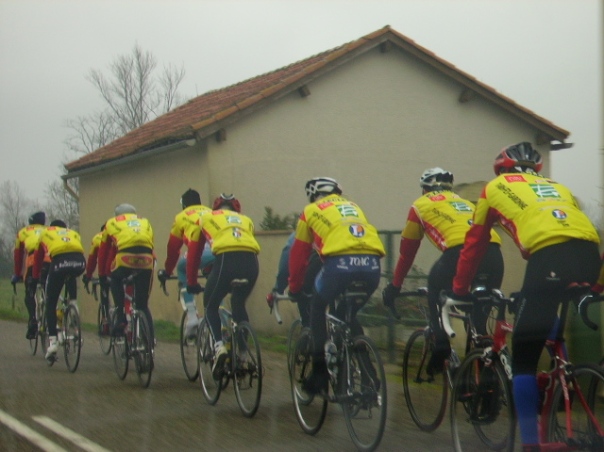You may also be interested in articles by Jetlagsports published on Pezcyclingnews.com on training methods and general information, which can be found here:
Group riding skills: http://www.pezcyclingnews.com/?pg=fullstory&id=6731&status=True&catname=Latest%20News
Training with Bouygues Telecom: http://www.pezcyclingnews.com/?pg=fullstory&id=4655
Nutrition: how not to prepare for an event: http://www.racingunion.org/PermaLink,guid,bad5a8f3-2b8b-492b-91d2-5496b08759eb.aspx
______________________________________
This article was published on Pezcyclingnews. It may be of interest to some of you wanting to improve your group riding skills.
Ride like a Pro: Group Ride Rules

Giro d'Italia Stage winner David McKenzie knows how to ride in a group
Being strong is one thing, but knowing how to ride is quite another. Knowing how to ride in a group will increase your own riding enjoyment as well as that of the people you ride with. Above all it is a matter of safety. There are a series of basic rules to follow in order to ride properly in a group, and yet it is often surprising how few people know these rules. Now you might be thinking this doesn’t apply to you, after all, you are a Cat 1 and winner of the Thursday night or Saturday morning World Championships… Like I said, it’s amazing how many people don’t know how to ride in a group. If you are new to the sport, this will help you for the next group ride you attend, if you are old to the sport, this should be a useful recap of what you already know.
Rule 1) Not a race: a group ride is NOT a race. You are not to “Attack” off the front or try to show everyone how strong you are. That’s what races are for.
Rule 2) Bar-to-Bar: (Fig 1) and this is probably THE most important rule. Whenever riding in a group you should be riding 2 by 2, side by side (with only a few centimeters between you, you should NOT be able to fit a bus between you and rider beside you) and be perfectly handlebar to handlebar. Do not at any time sprint ahead and disrupt the flow. Even if there is a corner coming up, stay side by side and go through the corner like a well oiled machine. Riding with your bars ahead of the rider beside you is called “half-wheeling” and is a major faux pas. It is up to you to keep up with the speed of the slower rider next to you. And for goodness sake, please try to keep to the side of the road, there is no need to take over the whole lane and annoy car drivers.

Fig 1
As with everything, there is an exception to the rule. If there is an uneven number of riders in the group and you don’t have anyone to ride along side, you should place yourself in between the two riders ahead of you, with your front wheel between their two rear wheels (Fig 2). This allows the riders behind you to remain bar to bar and to keep the group tightly together. The riders behind you should ride with their front wheels either side of your rear wheel. It is not acceptable to sit directly behind the rider ahead of you and leave a gap to your side. Now before you spark up and say that riding between the wheels of the riders preceding you is unsafe, let me point out, that if everyone is riding bar to bar as they should be, you are guaranteed the space of a handlebar’s width within which to move, which should be ample. So even if the two rider ahead of you knock into each other you should have plenty of space. This is a pretty safe place to be.

Fig 2
Rule 3) Peeling off: When you are tired of riding at the front, and you feel it is time for you to go to the back, make sure the rider beside you knows you are tired and want to go back, once you have both established that you are going back, check briefly that there isn’t someone overlapping your back wheel, then both riders slowly and gradually go to the outside and let the group come through the middle. Do not suddenly veer off to the side in a sudden movement, peel off in a steady and controlled manner. (Fig 3)
Rule 4) Pulling through: when the two riders ahead of you peel off, it is your job to come through to the front and pull the group along. If you do not want to ride at the front because you are tired or less fit that the rest of the guys, then it’s too late to avoid it now. Once you are in second wheel, you MUST come through to the front. Do not speed up, and do not get out of the bar-to-bar formation. Maintaining a steady speed, squeeze through the gap and go to the front (Fig 3). When the two riders ahead of you peel off, don’t slow down and hesitate and look around as if you don’t know why on earth they would be pulling off to the sides of the group. Maintain your speed and go straight through without hesitation.

Fig 3
Rule 5) Too tried to go to the front: If you do not want to go to the front, sit at the back and let the riders coming back from the front of the group get ahead of you. It is not acceptable to work your way up to the front of the group and then look around acting lost and confused, slowing down because you don’t feel strong enough to be at the front. If for whatever reason you do find yourself at the front, go through and take what is known as a “token pull”. You go to the front for a couple seconds, agree with the rider beside you that you are both peeling off, and go to the back.
Rule 6) Gaps: There should be NO gaps in a group ride. As soon as see a gap, fill it by riding into the space in a steady and controlled manner. There is no need to sprint into the space and then have to slam on the breaks, just gradually fill in any gaps as soon as you see them.

French Bouygues Telecome development team ride in an organized group during their pre-season training camp
Rule 7) Moving about in a group: If you need to go to the back of the group, or need to move out away from the side of road because the road is damaged for example, just steady move in whatever direction you want to go in. The key to all cycling is to do things gradually and steadily. Even if there is a rider right next to you as you pull out to the side of the road, if you do it gradually, the other ride will naturally have time to move over with you. If you do anything sudden you are likely to cause a crash. This is also very important when “peeling off” and “filling a gap”.
Rule 8 ) Obstacles and hand signals: Now, this is a very important rule. In a lot of countries such as the US and Australia, people in group rides have got into the habit of yelling. I’m not too sure where this habit has come from, so lets set a few records straight. When you see a hole in the road, it is absolutely NOT acceptable to yell “HOLE” at the top of your voice, then weave around it at the last minute. It is also inacceptable to yell “SLOWING” when you slow down. If you can’t see the riders in front of you are slowing down, then maybe you should stick to monopoly on a Sunday afternoon. All obstacles should be warned of by a simple hand signal. This does not mean pointing at something for 5 minutes after you have passed it. When you see an obstacle in the road ahead of you, put your hand down and give a signal that lets the riders behind you know in which direction they should go to avoid it. Traditionally a quick wave of the hand will suffice. If you only see the obstacle at last minute, ride through it! Better to get a flat than to take down the whole group. On the subject of obstacle, please only point out obstacles that are worth pointing out. What obstacles are worth pointing out? I hear you cry. That’s simple. An obstacle worth pointing out is one that will damage a bike or person behind you. Please don’t point out manhole cover unless they are deeply set in the road, and don’t point out leaves or small cracks in the road, and certainly don’t point out obstacles in the next lane.
Rule 9) Yelling: As I have said above, yelling is a big no-no. You don’t see the Pros riding around Europe on their pre-season training camps yelling “CARRRRRRR… HOLE, GRAVELLLL… RED LIGHTTTTT”. The problem is this: when you are more than two riders behind the person yelling, all you can actually yeah is a general “BLURRRRR” being yelled. So while everyone should be keeping their eyes peeled for general speed changes and obstacles, suddenly the majority of riders are looking around wondering what the obstacle is that has just been yelled out. No one actually knows if you have just yelled “HOLE” and have not pointed it out, meaning some riders are scanning the ground left right and center looking for an imaginary hole. Other riders are craning their necks thinking you yelled “CAR”, while yet more riders are looking behind them thinking you yelled “George has a FLAAAT!” Yelling is strictly forbidden!
Rule 10) Slowing and adjusting speed: This is probably the biggest crash causer on group rides. For some reason, when someone slows down ahead of them, a lot of riders jump for their brakes and yank the heck out of them, almost skidding and taking everyone down with them. You should be riding ever so slightly to the side of the rider in front of you (Fig 1); so when they slow down, you either stop pedaling and start to slightly overlap your front wheel with their rear wheel, or you touch the brakes gradually, once again using the “wheel overlap” as a buffer zone so as not to slow down too suddenly for the riders behind you.
These rules may seem like a bunch of snotty European old school and pointless rules, but they come from very simple principles of general safety for a group ride. So stick to them, and spread to the good word to your fellow new-comers to the sport. For any Pro rider worth his weight in salt, these are not even thought of as “rules”. They are instinctive and are a natural part of riding. This may by why some road riders can come across as rude and arrogant. Ride etiquette is so second nature to them, that in their eyes, the only reason anyone would break them, would be on purpose.